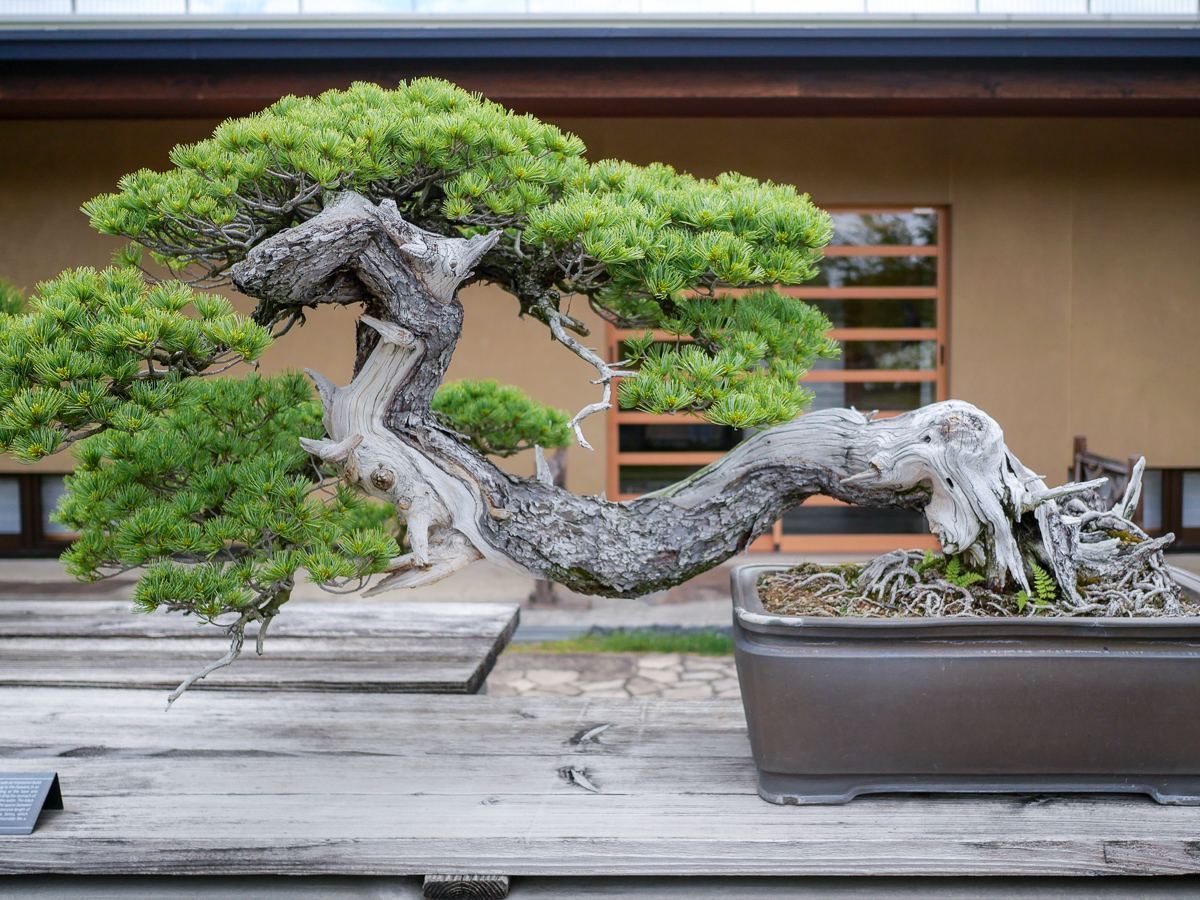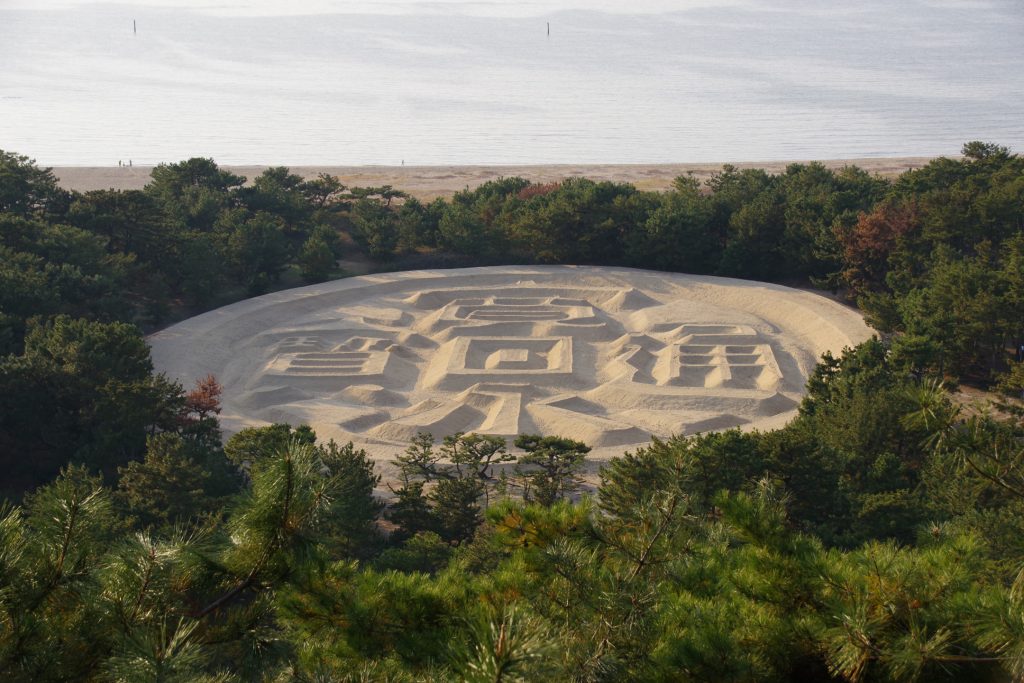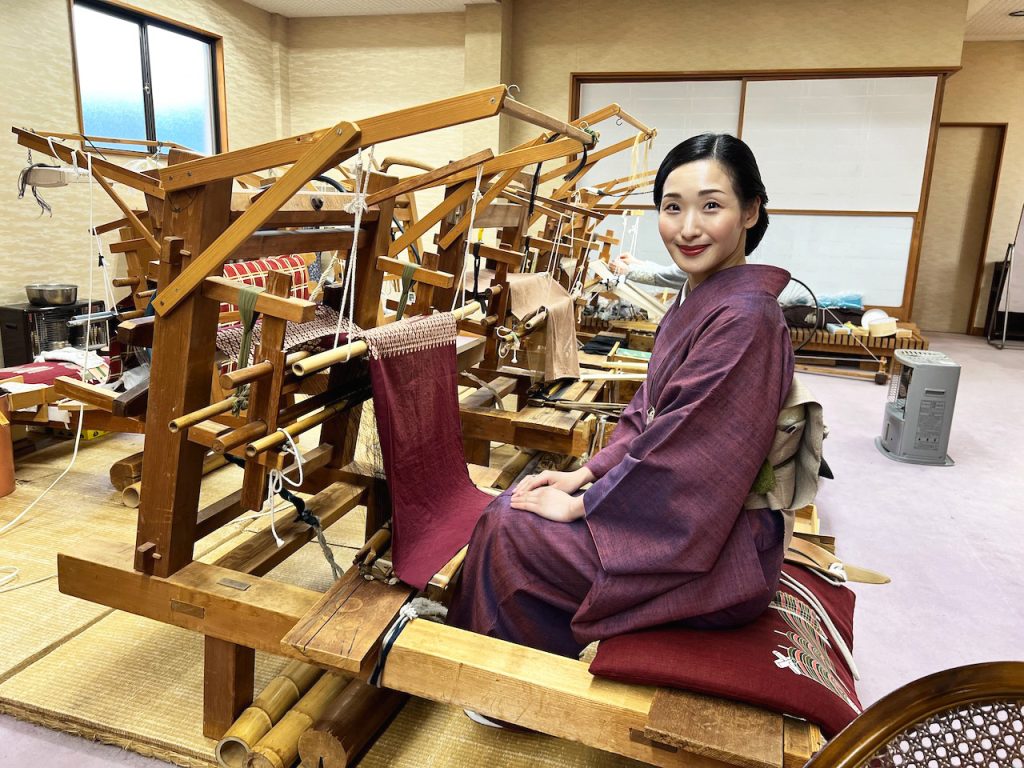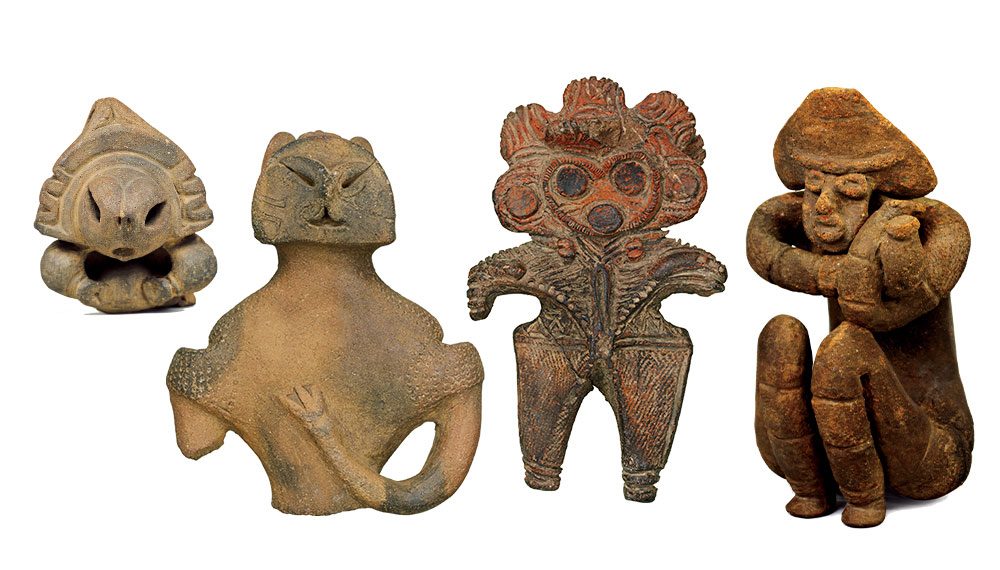Are you interested in bonsai (盆栽) but don’t know how to appreciate them properly? What points should beginners look out for when appreciating bonsai? In this issue, we asked Hashimoto Hiroaki (橋本浩明), Director of the Omiya Bonsai Art Museum, Saitama, to tell us about the points of bonsai appreciation that even beginners can understand.
Three questions to help you understand bonsai
First, we asked them about three things they were interested in regarding the definition and care of bonsai.
Q1.What is the difference between a bonsai and a potted plant?
The requirement of bonsai is for a plant to be potted and arranged beautifully to represent a natural landscape. If a tree is simply planted in a pot, it is a ‘potted plant’, but a ‘bonsai’ is a work of art that is then worked on and shaped to recreate a large piece of nature in a small pot. Take this bonsai, for example. If you look closely, you can see that the branches are covered with wire. By shaping it in such a way as to lower its centre of gravity, it expresses the taste of an old tree and the weight of snow.

Another unique expression of bonsai is the unit of space called a ‘seki (席)’. It is important to consider not only the bonsai itself, but also where and how it is placed in that space, to make the viewer imagine things that are not there. This bonsai has a flowing shape, so I dared to leave a little space on the left side to let the viewer feel the presence of the wind, and by placing a suiseki (水石; viewing stone) at the end of the viewpoint flow, I made one seat look like a single work of art.

Q2: Are there ‘schools’ like flower arrangement?
There are no clearly defined schools of bonsai bonsai in the world of bonsai. However, each bonsai garden and bonsai master who grows bonsai has its own specialities and methods of care. Therefore, if you are familiar with bonsai, you may be able to tell which bonsai garden the bonsai was grown in by the characteristics of the care.
Incidentally, although beginners may have a strong image of ‘bonsai = pine’, there are no rules regarding the types of trees used for bonsai. In a large classification, bonsai made from evergreen coniferous trees such as pine and Japanese oak are called ‘Shohaku Bonsai (松柏盆栽; coniferous bonsai)’ while bonsai made from trees that flower or have autumn leaves are called ‘Zoki Bonsai (雑木盆栽; deciduous Bonsai)’.
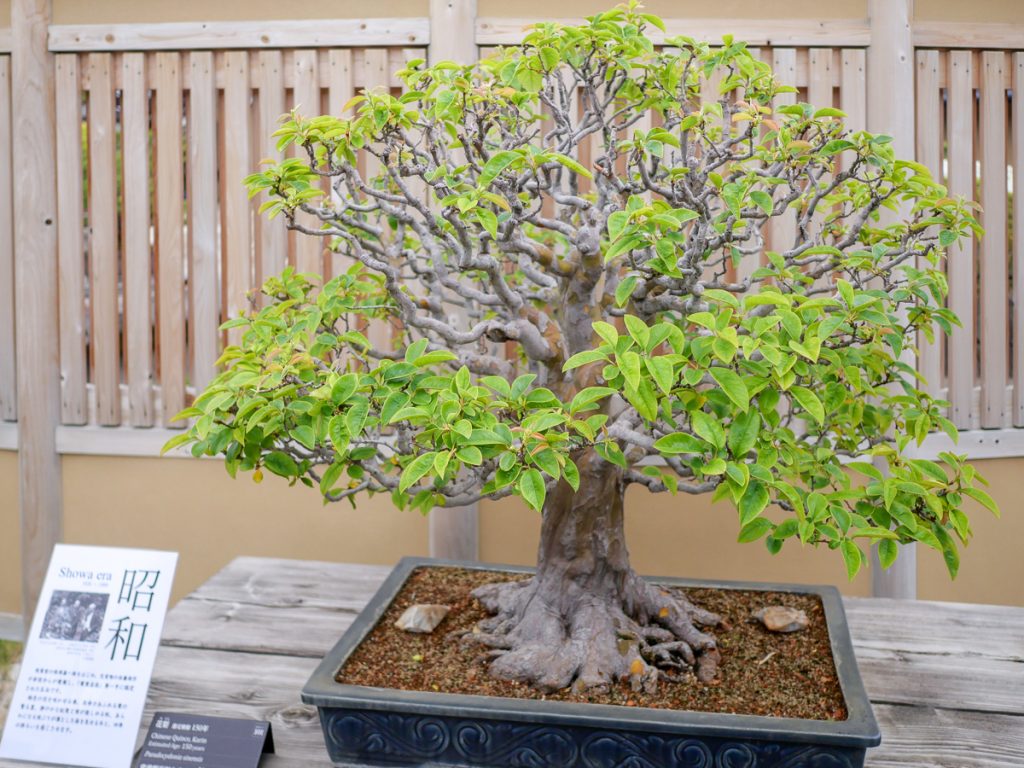
This is a flowering pear bonsai.
Bonsai is also popular overseas as ‘BONSAI’, and is enjoyed with plants suited to the region and its climate – there are bonsai of la france and olive trees in Europe, and bonsai of baobab trees in Africa.
Q3.How do I care for my bonsai?
When you hear the word ‘bonsai care’, you may think of pruning and shaping with a pair of scissors, but there are many different tasks involved in the actual care of a bonsai. Two of the most common tasks are replanting. Bonsai trees are grown in very thin pots, which means that the roots become more and more crowded. So every few years, the old roots need to be cut to make space and refresh them.
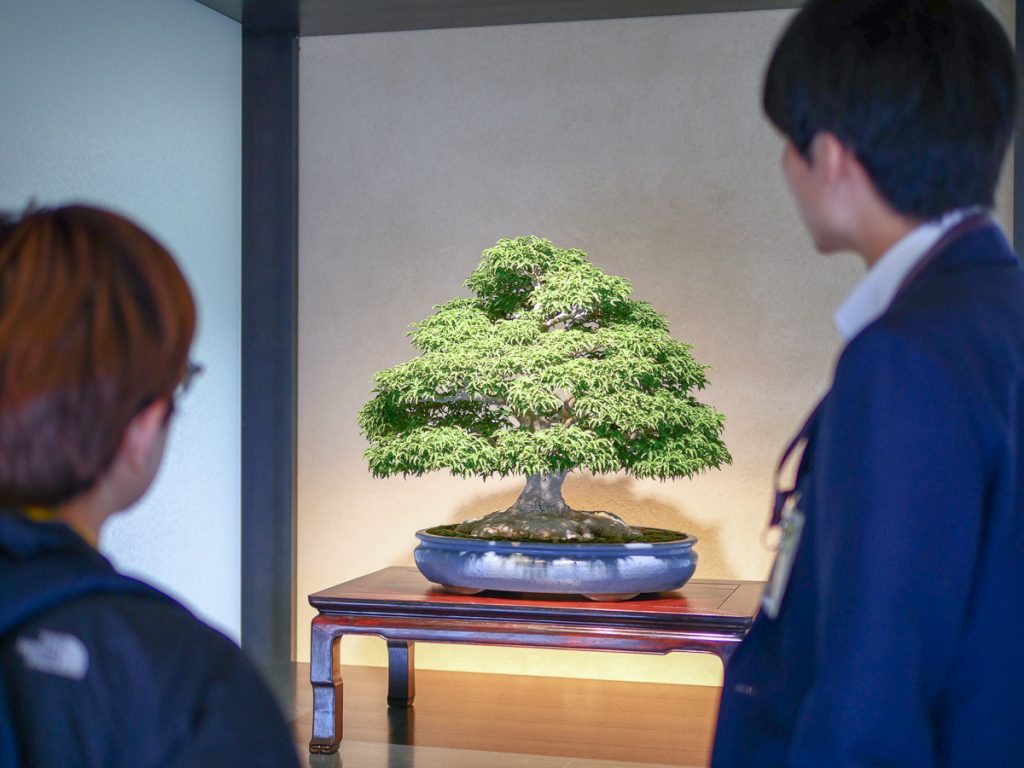
Indeed, all bonsai pots are shallow.
And the most important task is watering. As the thin pots have a limited amount of soil, if they are not watered every day, they will soon dry out and weaken. The watering is very delicately adjusted according to the type and age of the tree, the individual characteristics of each tree, the climate and environment of the day, and ‘if it is in this state today, when and how much water should I give it’. It takes a long apprenticeship to know the right amount of watering, which is why there is a saying in the world of bonsai artisans that it takes three years to water a tree masterfully.
This article is translated from https://intojapanwaraku.com/rock/culture-rock/5813/
Photo / Kimura Yu (きむらゆう)






